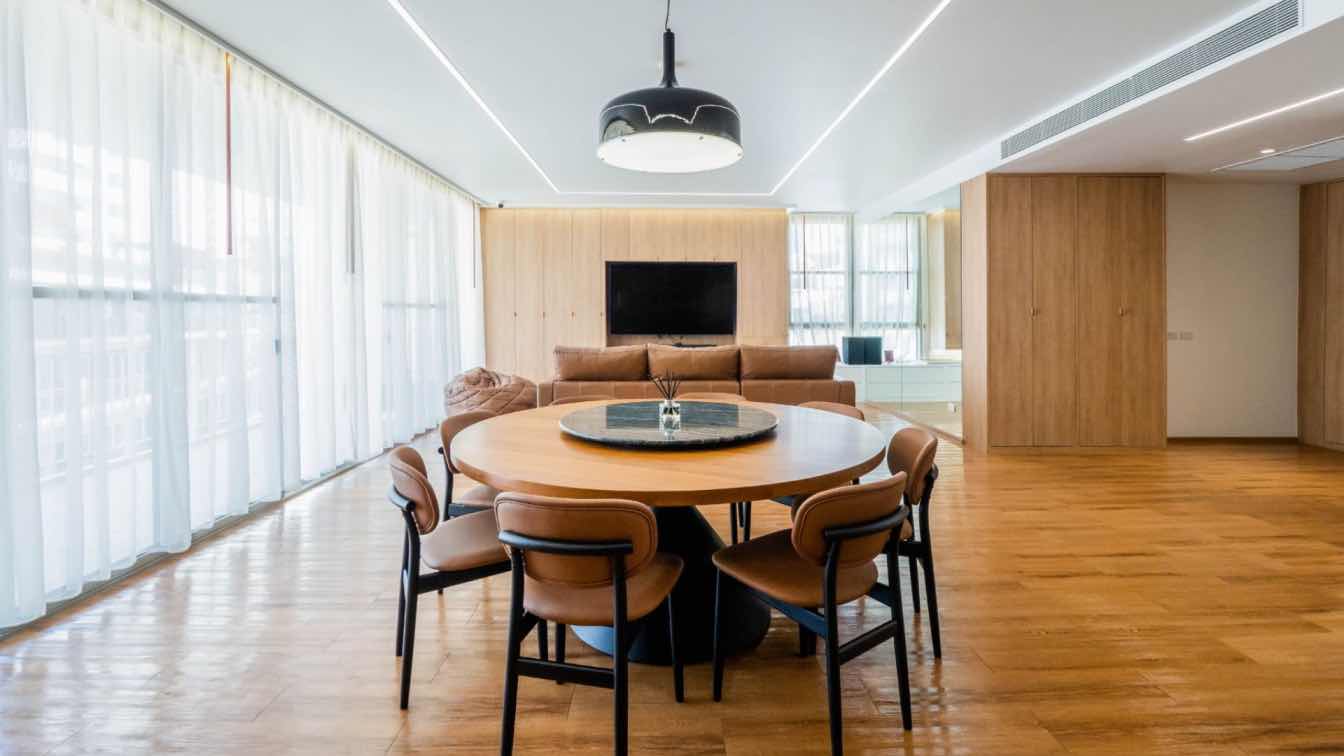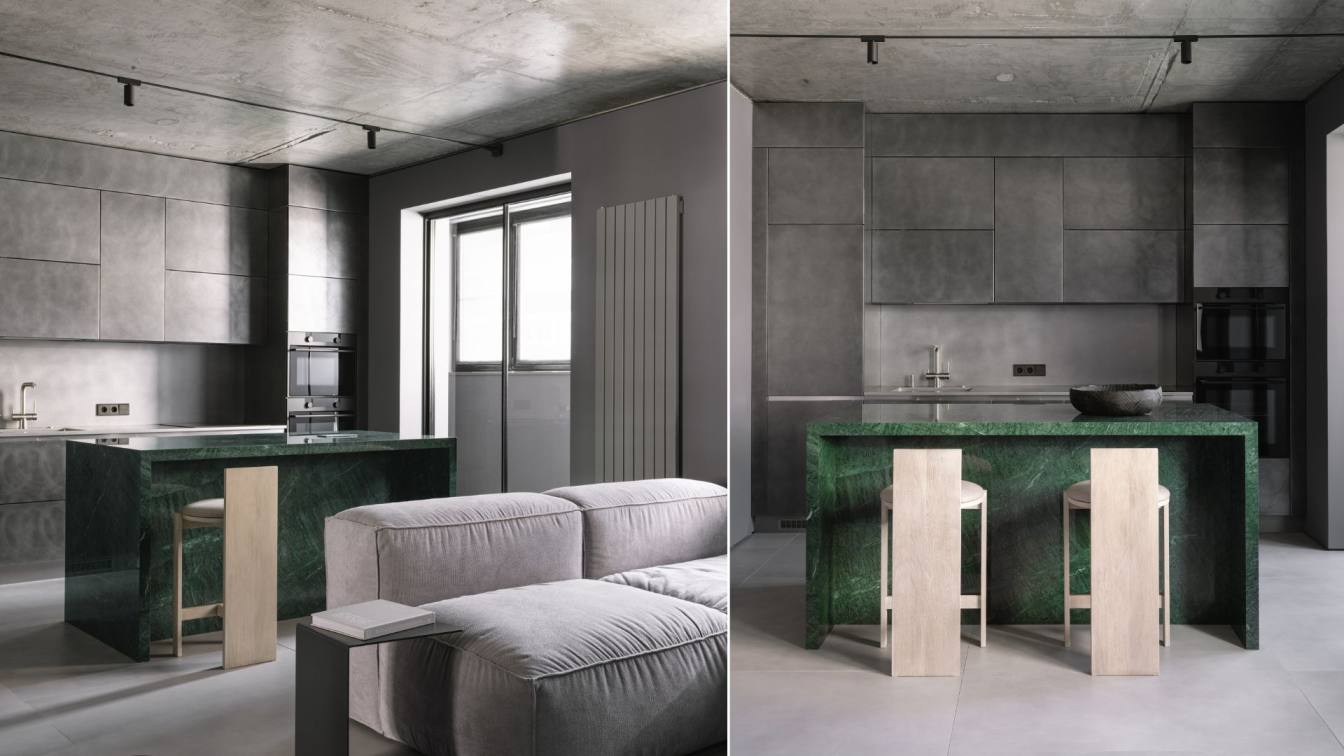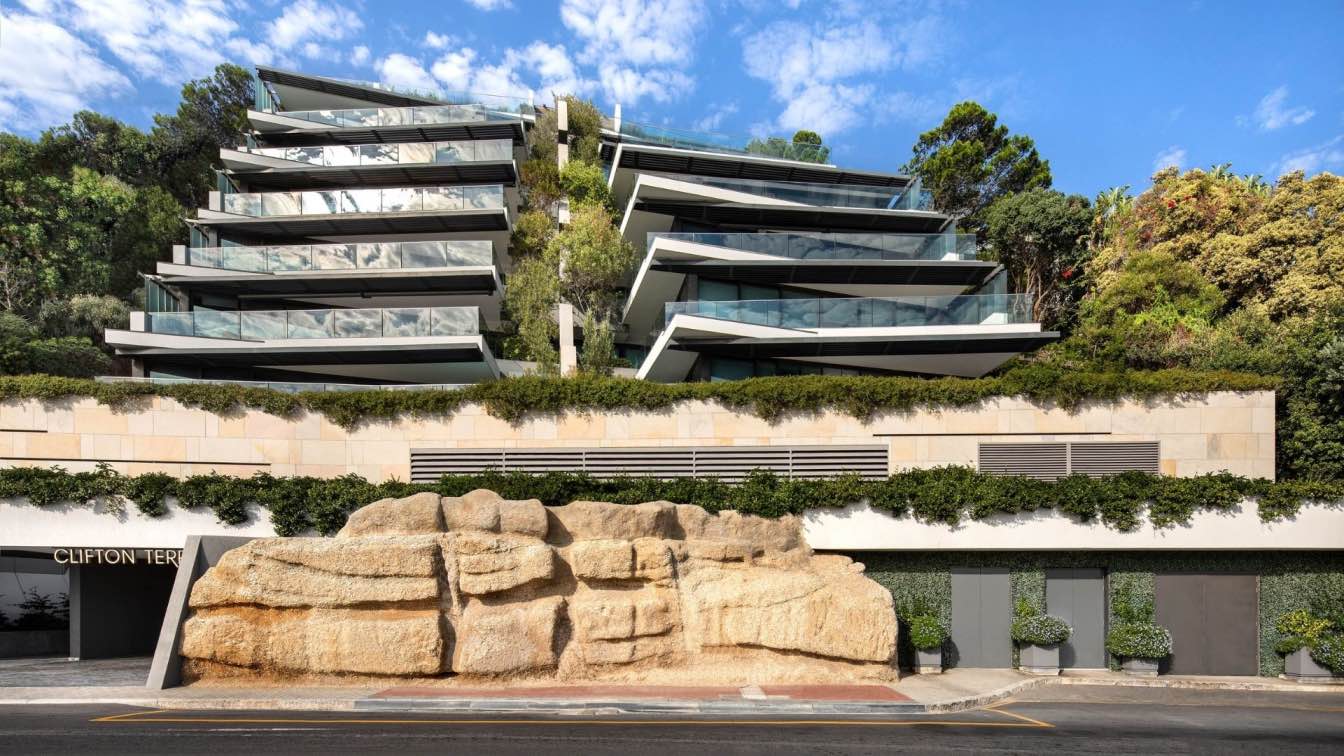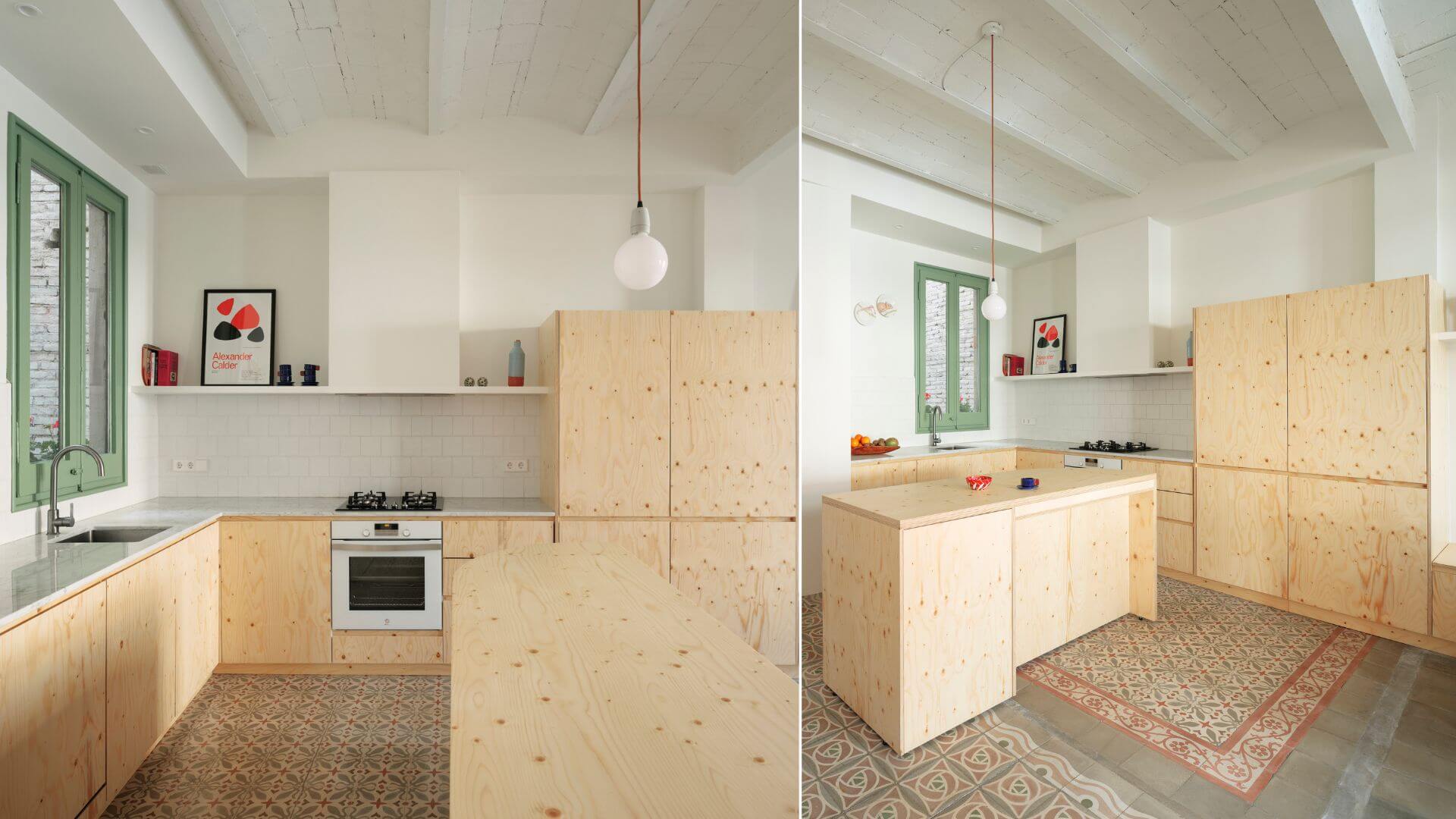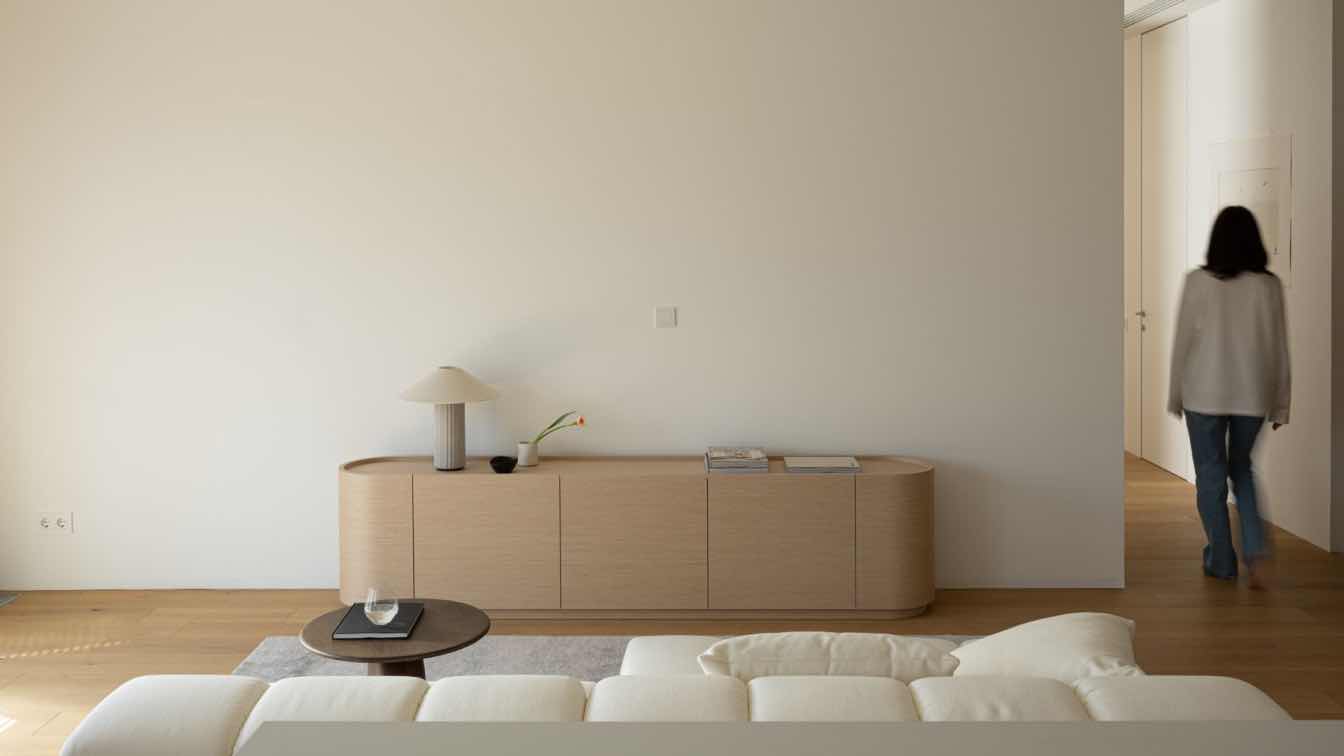mArchten: The renovation project was initiated when newlyweds Khun Wee and Khun Prae were bestowed with a remarkable wedding gift from their families: a 350-square-meter penthouse occupying the top floor of Sirivit Residence in the vibrant district of Asoke, conveniently located near Sukhumvit Road. The penthouse was envisioned as their first shared home.
The design mandate was clear: adapt the expansive space to suit the functional needs of a nascent family, while reimagining the interior aesthetic to reflect the couple's dynamic lifestyle. Importantly, the design intent included preserving select elements of the original mood and tone, a tribute to the space’s sentimental origins. This approach seamlessly integrates the past with the present, resulting in an interior that balances a sense of heritage with a clean, orderly elegance.
The primary design challenge for this penthouse was to amplify storage solutions in a limited space without compromising the room's footprint or resorting to constructing new storage rooms. The goal was to effectively store various household items while maintaining a sleek and open appearance. To achieve this, the use of built-in cabinetry was employed, designed to seamlessly integrate with the room's walls, offering hidden storage that maintains the aesthetic harmony of the space.
Starting from the main entrance, which initially featured an undecorated wall, the designers introduced a functional area for shoe removal and storage, complete with seating for putting on shoes. The opposite blank wall was transformed into a continuous shelf and shoe cabinet, utilizing white facades to prevent a confined feel. Ventilation slots were incorporated to reduce moisture buildup within cabinets, and a continuous ceiling light was added to guide attention inward. At the end of the corridor, a display featuring a photograph of the couple warmly greets visitors, enhancing the welcoming atmosphere.

Moving into the living area, which seamlessly connects to the dining room and kitchen, the space is bathed in natural light through expansive floor-to-ceiling glass windows that run parallel to the balcony, offering breathtaking views of the Asoke cityscape. The accent wall features wood patterns, complemented by a modern Chinese-style dining set and warm brown leather sofas, giving the main living area a cozy atmosphere. The homeowners personally selected these furniture pieces, adding a personal touch to the space.
Behind the TV, a full-wall built-in cabinet provides extensive storage, cleverly integrating function with style. Parts of the original window walls were left uncovered to allow additional light to enter from different angles, while the cabinet wall opposite the windows is clad in mirrors to enhance brightness and create a sense of spaciousness, making the overall area feel more open and inviting.
In the kitchen zone, the designer added a special feature to the cabinetry, transforming it into a compact coffee nook. This area showcases an innovative design where cabinet doors can slide into side compartments, allowing the full display of coffee equipment and providing ample space to comfortably prepare drinks. This clever design ensures that the doors do not obstruct the view or workflow while in use and can be neatly concealed simply by closing the doors, maintaining a clean and organized appearance.
At the innermost section, there's a compact Thai kitchen area primarily styled in white, providing a clean and distinct contrast from other zones. The wall connecting to the exterior features sliding doors to facilitate ventilation, complemented by white vertical sunshade panels for privacy and to filter sunlight, reducing heat. The kitchen is equipped with built-in cabinets above and below for efficient storage of kitchen tools, while the countertop is clad in easy-to-clean white synthetic stone. This area is designed with a door linking to the laundry zone.

In the laundry room, the built-in cabinets are finished with full-wall wood, designed to provide comprehensive functionality. They house the washer and dryer seamlessly within the cabinetry, leaving a central area open as multi-purpose space for placing items during use. Additionally, a clothes rail is installed above the counter for hanging clothes. Adjacent to this area, tall storage cabinets extend from floor to ceiling, with lower drawers designated for cleaning supplies and detergent bottles, providing a convenient area to hold freshly laundered clothes before they are stored in bedroom closets.
On the other side of the penthouse is the private zone, featuring the main sitting area, the primary relaxation space for the owners. This area is divided by frosted glass panels, which provide a sense of movement from the adjacent space while maintaining privacy through their textured surface. The sliding track design cleverly allows the glass doors to tuck behind the TV unit, remaining unobtrusive when open. The decor in this private zone predominantly uses wood veneer finishes, continuing from the living area into the bedroom to create a natural, cohesive feel. This includes a small vanity table beside the bed, a wood-paneled feature wall behind the bed, and storage and shelving at the foot of the bed. Additionally, a hidden design feature is incorporated with the TV installation, where a sliding panel system allows for easy concealment of the TV or shelving clutter, maintaining a sleek and functional aesthetic with a simple slide of the doors.
Adjacent to the bedroom is the walk-in closet, cleverly divided by ribbed glass panels that provide both privacy and the benefit of natural light, thus preventing the space from feeling enclosed. The closet features predominantly wood finishes, with mirrored sections on the storage units. These mirrors not only enhance the lighting and add depth to the room but are also a favorite of Owner, as they allow her to check her outfits from every angle, boosting her confidence in selecting matching clothes and accessories each day before leaving the house.
This renovation project showcases that the most crucial aspect of design lies not merely in the execution by the designers, but fundamentally in the initial phase of accurately defining the homeowner's requirements. This encompasses the utilization of space, behavioral patterns associated with its use, and preferences in décor, ensuring that all dimensions are clearly articulated and comprehensively addressed.



















